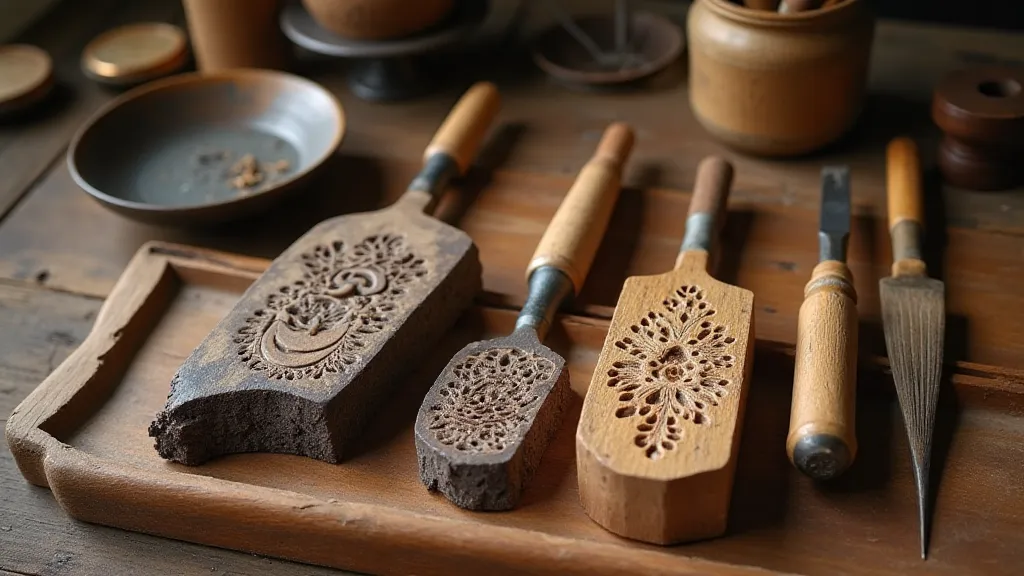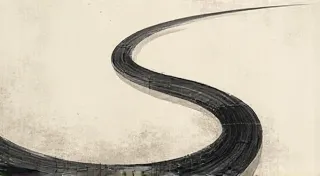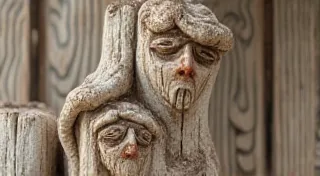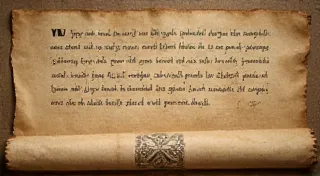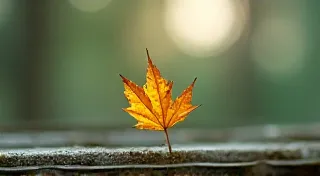The River of Ink: Mapping Flow and Form in Mokuhanga Design
There’s a particular scent that clings to old things. Not dust, exactly, but something deeper, a mingling of time, wood, and forgotten purpose. I first encountered it years ago, sorting through the estate of a distant relative – a collection of antique accordions. Each button, each reed, a testament to a craftsman’s skill and the music it once held. The feeling resonated deeply, reminding me of something ancient and resonant. That same feeling, a connection to both history and artistry, is what draws me to Mokuhanga, Japanese woodblock printing.
Mokuhanga isn’t simply about carving wood and applying ink; it’s a dialogue. A conversation between the artist, the wood, the brush, and the water. And at the heart of this conversation lies the river of ink – the way it flows, pools, and blends, directly shaping the final image. It’s a process that demands sensitivity, intuition, and a profound understanding of how seemingly simple techniques can yield breathtaking results.
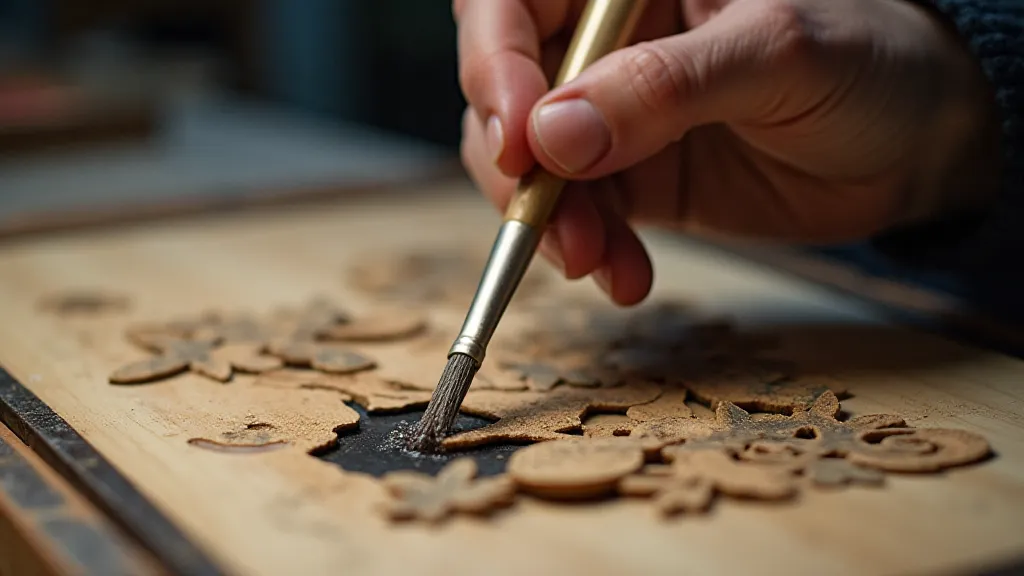
Historical Currents: Mokuhanga’s Journey
While the tradition of woodblock printing in Japan has roots in Buddhist texts – the earliest examples dating back to the 8th century – Mokuhanga, as we recognize it today, truly blossomed during the Edo period (1603-1868). Initially employed for producing affordable ukiyo-e prints (pictures of the floating world) – depictions of actors, courtesans, landscapes, and scenes from everyday life – Mokuhanga evolved from a purely commercial art form into a respected and celebrated discipline. Unlike Western woodcut techniques, which often prioritize sharp lines and stark contrast, Mokuhanga embraced a softer, more nuanced approach. The use of water-soluble inks, careful layering, and a deliberate blurring of edges created a unique aesthetic that captured the fleeting beauty of the natural world.
Think of Hokusai's “The Great Wave off Kanagawa.” While technically ukiyo-e, the subtle gradations of tone, the almost ethereal quality of the wave – those are qualities born from the principles that would later define Mokuhanga’s signature style. The skill isn's just in the carving, but in manipulating the ink to capture that particular atmospheric effect. The demand for these prints fueled the development of specialized tools and techniques, handed down through generations of skilled artisans.
The Dance of Water and Ink
What truly sets Mokuhanga apart is the use of water. Water isn's merely a cleaning agent; it's an active participant in the printing process. The woodblocks are dampened before inking, and water is used to soften the ink, create gradients, and control the flow. This allows for subtle blurring, a gradual shift from light to dark, and a sense of movement that is difficult to achieve with other woodblock techniques. The choice of paper also plays a crucial role. Traditional washi paper, handmade from long fibers, absorbs the ink differently, contributing to the final texture and depth of the print.
Imagine trying to replicate the soft, hazy effect of cherry blossoms in full bloom without the ability to subtly dilute the ink and guide its flow. The artist isn't simply applying a solid block of color; they're orchestrating a delicate interplay of light and shadow, creating an illusion of three-dimensionality on a flat surface. Achieving this requires a profound understanding of how water interacts with the ink and the paper.
Embracing ‘Ma’: The Power of Negative Space
The concept of ‘ma’ – often translated as negative space or interval – is deeply ingrained in Japanese aesthetics and profoundly impacts Mokuhanga design. 'Ma' isn't just about what *isn't* there; it's about the space *between* things, the breathing room that allows the eye to rest and the spirit to contemplate. In Mokuhanga, 'ma' is achieved through the strategic use of light and dark, allowing the eye to move freely across the print and appreciate the interplay of forms.
Consider a print of a lone bamboo stalk swaying in the wind. The beauty isn't just in the stalk itself, but in the empty space surrounding it – the suggestion of a vast, unseen landscape. The artist doesn't fill every inch of the woodblock with imagery; they leave room for the imagination to wander, inviting the viewer into a world of subtle suggestion and evocative atmosphere. This deliberate use of 'ma' elevates the print from a mere depiction of a scene to a meditation on nature and the passage of time.
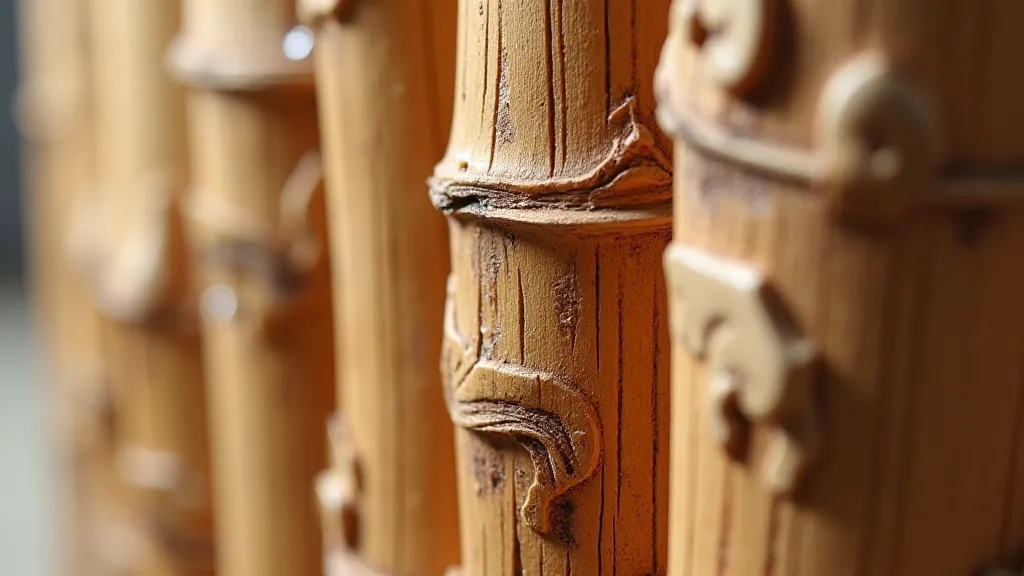
Collecting and Restoration: Preserving a Legacy
While original ukiyo-e prints from the Edo period can command significant prices, there’s a growing appreciation for contemporary Mokuhanga prints, making them accessible to a wider range of collectors. When considering a purchase, look for prints that exhibit a sensitivity to color and composition, and a willingness to embrace the inherent imperfections of the handmade process. A slight blurring, a subtle variation in color – these aren't flaws; they’re evidence of the artist’s hand and the unique nature of the print.
If you're fortunate enough to acquire an older print that requires restoration, be aware that delicate handling is paramount. Avoid aggressive cleaning methods that could damage the paper or the ink. Consult with a professional paper conservator for guidance on proper storage and repair techniques. The goal isn't to erase the print's history; it's to stabilize it and ensure its preservation for future generations.
Beyond Technique: A Path to Understanding
Learning Mokuhanga isn't just about mastering technical skills; it's about cultivating a deeper appreciation for Japanese aesthetics and the profound connection between art and nature. It’s a slow, deliberate process that demands patience, observation, and a willingness to embrace imperfection. The act of carving the wood, mixing the ink, and applying it to the paper becomes a form of meditation, a chance to connect with a centuries-old tradition and find beauty in the simple act of creation.
The quiet precision of the process reminds me of those antique accordions, each button meticulously placed, each reed carefully tuned. Both require a craftsman's dedication and a deep respect for the materials. Both are vessels of beauty, waiting to share their song – whether it be a melody or a breathtaking print – with the world.
